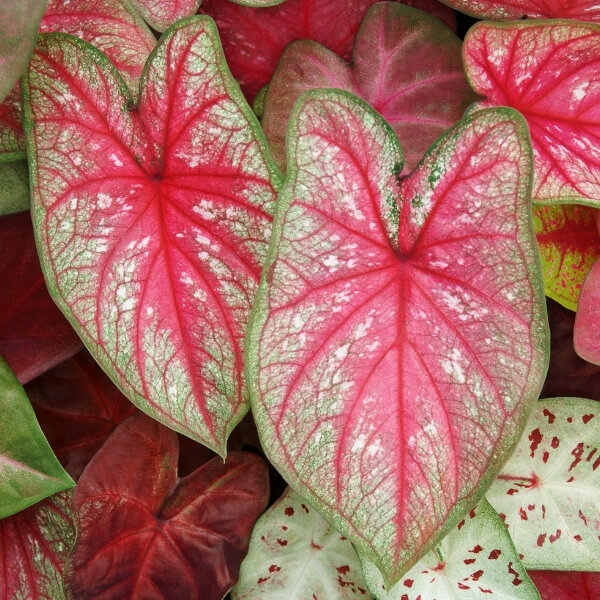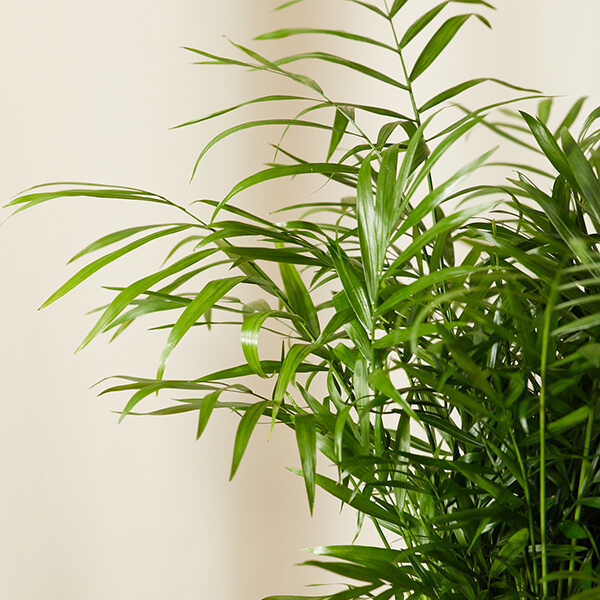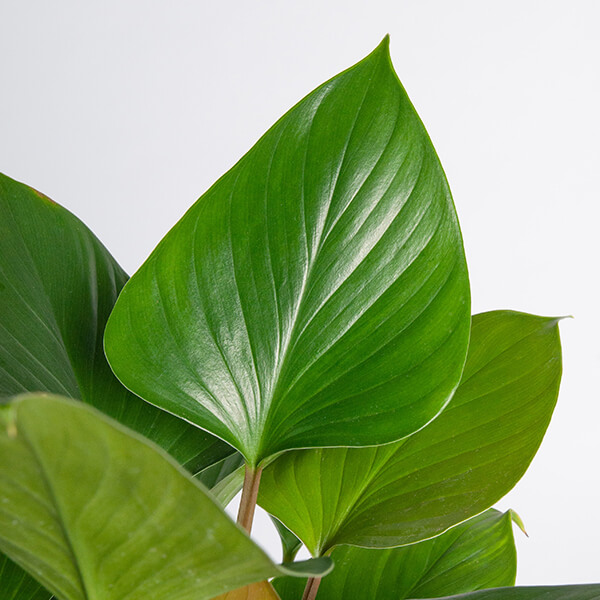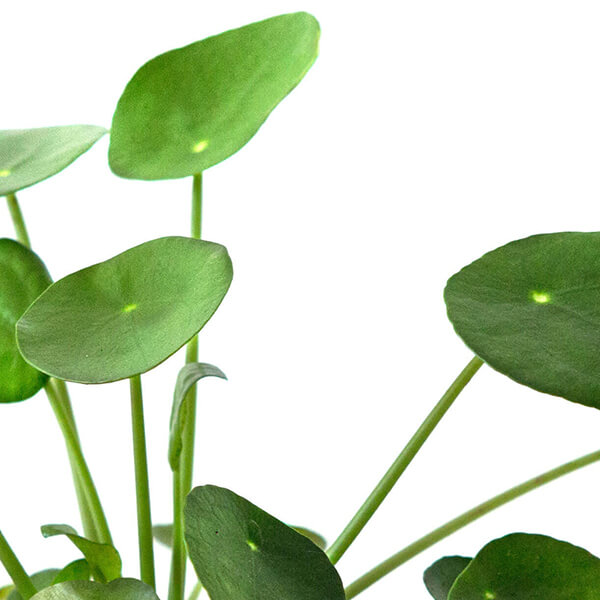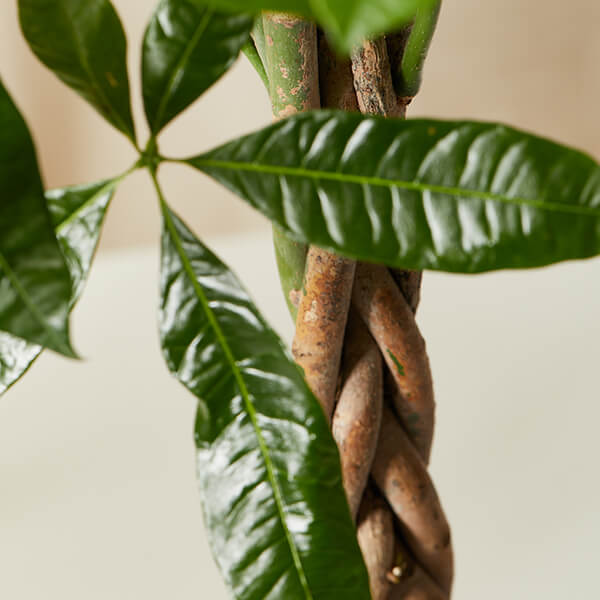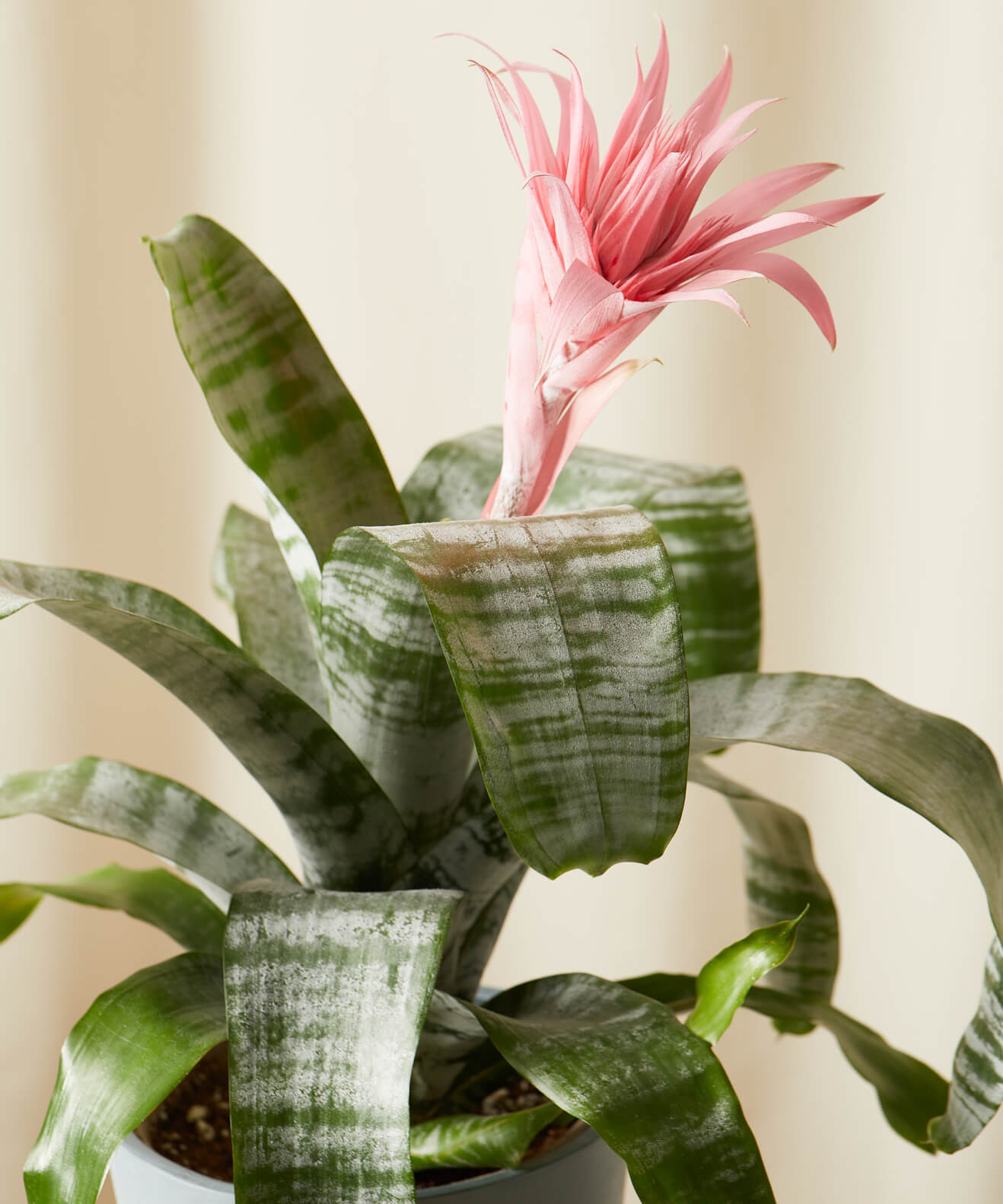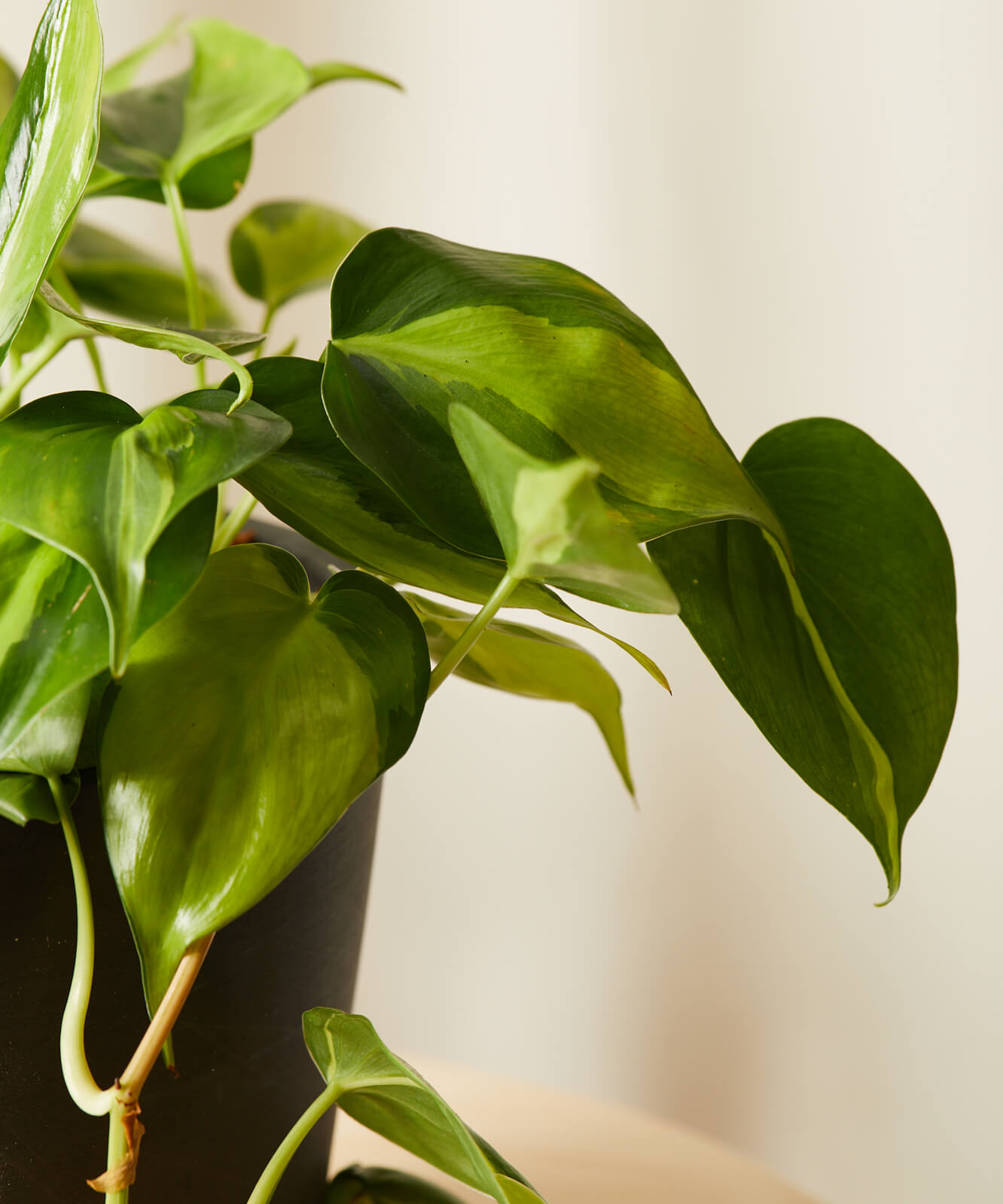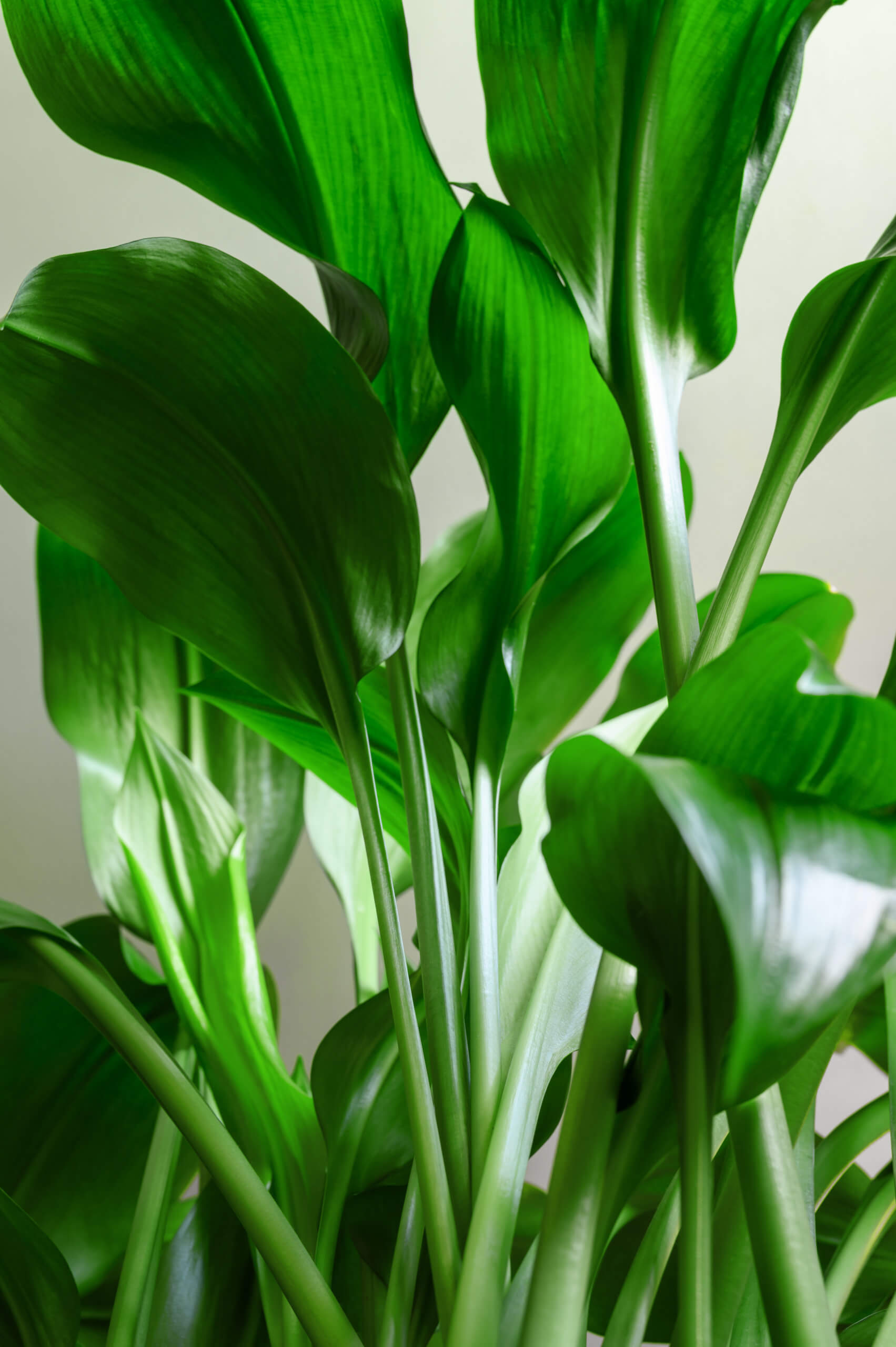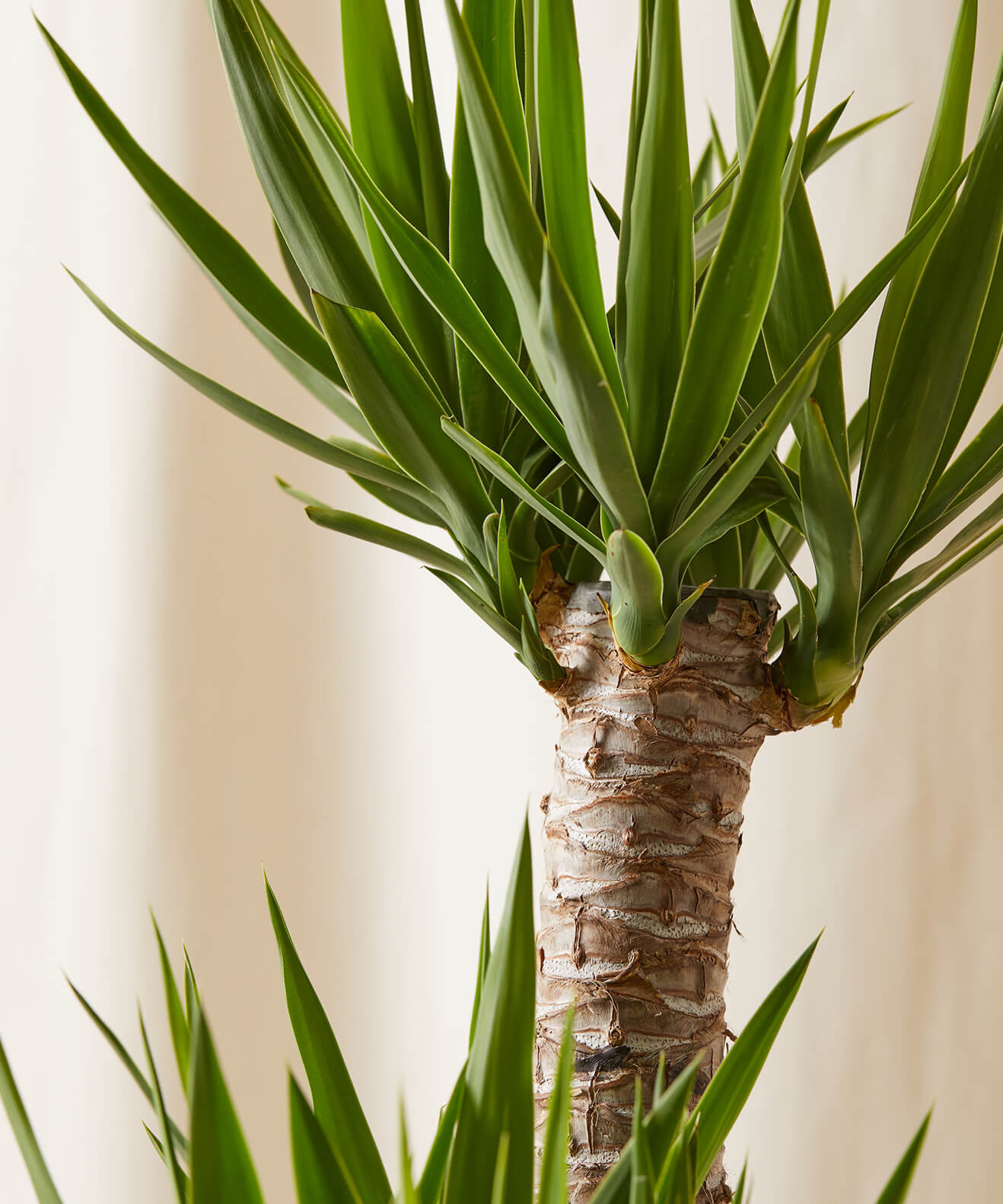Search
119 results found with an empty search
- Caladium | Plantastic
< Back Caladium Light: Your caladium will thrive best in bright to medium-bright indirect light. It can tolerate direct morning sun like in an eastern or northern window. Avoid areas in which it will be exposed to harsh afternoon sun. Water: Water your caladium when the top 25% of soil is dry. Water thoroughly, and be sure to empty the saucer of any excess water to prevent root rot. When the plant goes dormant in the winter, water very sparingly to allow the plant to rest. Begin watering again in the spring to “wake” the plant out of dormancy. Pet-Safe: Your caladium is considered to be toxic to pets and humans if ingested. Can cause mouth and stomach irritation. Previous Next
- Palm | Plantastic
< Back Palm Light: Your Palm prefers bright indirect light but can adapt to medium to low light areas. Water: Water your Palm when the top 50% of the soil is dry. Water until liquid flows through the drainage hole at the bottom of the pot and discard any water that has accumulated in the saucer. Pet-Safe: Completely non-toxic to humans and pets. Previous Next
- Homalomena | Plantastic
< Back Homalomena Light: Your Homalomena likes bright indirect light. They can tolerate lower light, but growth may slow significantly. If kept in direct sunlight, the foliage may burn. Water: Allow the top 50% of the soil of your Homalomena to dry out between watering. They do not like soggy soil, but also do not like to dry out for extended periods of time. Pet-Safe: Your Homalomena is toxic to animals and humans if ingested. Previous Next
- Pilea | Plantastic
< Back Pilea Light: Your Pilea prefers bright, indirect light. Direct sun may burn the leaves. In order to prevent your Pilea from growing lopsided, rotate it at least 2-3 times a week since it grows towards the sun. This plant can adapt to lower light areas, but the leaves will turn a darker green and the plant will spread out more. Water: Water your Pilea when the top 75% of the soil is dry. Water until liquid flows through the drainage hole at the bottom of the pot and discard any water that has accumulated in the saucer. Pet-Safe: Pilea are generally non-toxic for humans and pets. However, when ingested in very large quantities, they can cause a mild digestive reaction. Previous Next
- Money Tree | Plantastic
< Back Money Tree Light: Your Money Tree prefers indirect bright light, and can adjust to lower light. Too much direct light will scorch the leaves, but too little light will cause slow growth and yellow leaves. Rotate your plant monthly to keep growth even. If you are worried you don’t have a spot with enough light, try a grow light. Water: Water your Money Tree when the soil volume is 50-75% dry. Always check the soil moisture before watering. Water thoroughly until you see water flow out of the drainage hole and discard any excess water in the saucer. Pet-Safe: Money Trees are considered non-toxic and pet friendly. Previous Next
- Bromeliad | Plantastic
< Back Bromeliad Light: Your Bromeliad prefers indirect bright light like from a sunny eastern window. Too little light and the plant will not produce new pups and flowers, but too much light will burn the leaves. Water: Bromeliads are unique in that you water the center of the plant instead of the soil. Keep the center of the plant filled with water at all times – up to halfway. Every few weeks, empty any water, rinse and fill with fresh water. This helps prevent salt and mineral buildup. Only water the soil when it is 100% dry. When watering the soil, water until liquid flows through the drainage hole at the bottom of the pot and discard any water that has accumulated in the saucer. Pet-Safe: Your Bromeliad is non-toxic and pet friendly. The leaves can cause contact dermatitis in some individuals, so consider wearing gloves when handling the plant. Previous Next
- Philodendron Heartleaf | Plantastic
< Back Philodendron Heartleaf Light: The Philodendron Heartleaf can cope with low light conditions, but grows faster and produces more leaves bright indirect light. Do not put it in direct sunlight–the sun will burn the foliage. Water: Water your Philodendron when the top 50%-75% of the soil is dry. Water until liquid flows through the drainage hole at the bottom of the pot and discard any water that has accumulated in the saucer. Pet-Safe: Philodendron leaves are toxic to pets and humans. Typically, ingestion will result in swelling of the lips and tongue, and stomach irritation with possible vomiting. Previous Next
- Cast Iron Plant | Plantastic
< Back Cast Iron Plant Light: Your cast iron plant can grow in low and artificial light, but will perform best in bright to medium-bright indirect light. It can tolerate a few hours of direct morning sun, but avoid areas in which it will be exposed to harsh afternoon sun. Water: Water your cast iron plant when the top 50-75% of soil is dry. Water thoroughly, and be sure to empty the saucer of any excess water to prevent root rot. Pet-Safe: Cast iron plants are not toxic to humans and pets. Previous Next
- Yucca Cane | Plantastic
< Back Yucca Cane Light: Your Yucca prefers bright indirect light indirect to bright light. Too little light will cause growth to slow. Water: Water your Yucca when 75-100% of the soil volume is dry. Water until liquid flows through the drainage hole at the bottom of the pot and discard any water that has accumulated in the saucer. Pet-Safe: Yucca Plants are mildly toxic to pets and humans if ingested. Previous Next
- Yucca Cane | Plantastic
< Back Yucca Cane Light: Your Yucca prefers bright indirect light indirect to bright light. Too little light will cause growth to slow. Water: Water your Yucca when 75-100% of the soil volume is dry. Water until liquid flows through the drainage hole at the bottom of the pot and discard any water that has accumulated in the saucer. Pet-Safe: Yucca Plants are mildly toxic to pets and humans if ingested. Previous Next
